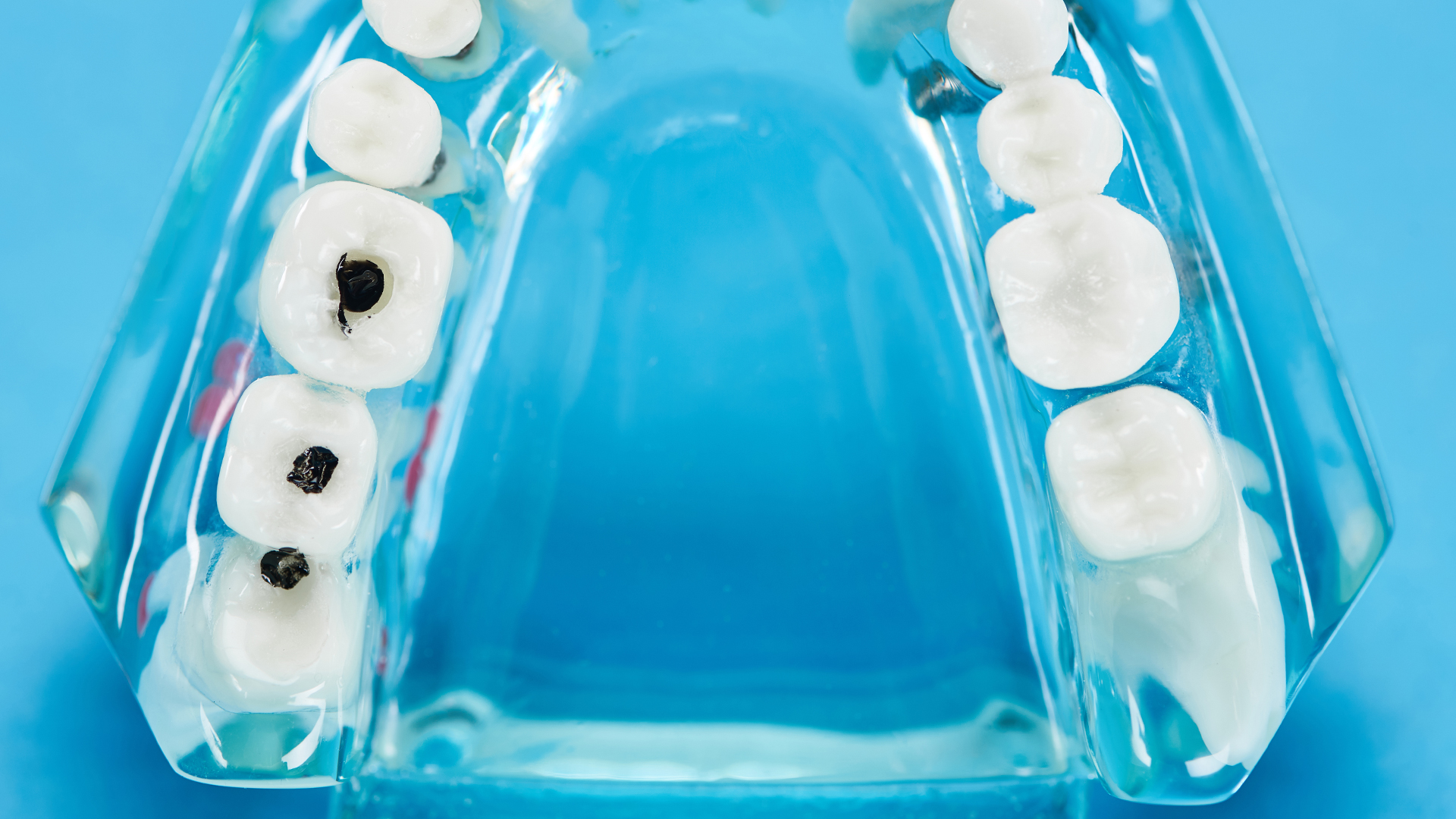
tooth decay
Tooth decay is a widespread disease among all people. It affects children, adults, and the elderly and causes a lot of harm and damage to dental tissue.
Many people neglect daily dental hygiene, and this leads to the accumulation of food residues on the surface of the teeth and the formation of a layer of plaque, which is a fertile environment for the growth of harmful bacteria that secrete acids that begin to destroy the dental material.
Although it may seem strange, tooth decay is one of the most common infectious diseases in the world and is the leading cause of mouth pain and tooth loss. The progression of caries is usually slow and, fortunately, can be prevented because it is closely linked to diet and dental hygiene.
Symptoms of tooth decay
Caries may occur and remain for a period of time without any symptoms appearing, but as the condition progresses, symptoms begin to appear as follows:
- Foul smell with a bad taste in the mouth
- Inflammation and bleeding of the gums
- Facial swelling
- Severe toothache, especially if the tooth decay extends to the nerve
- Pain increases with chewing food
- Tooth sensitivity to cold and hot foods and drinks
- The appearance of black or white spots on the teeth
- The condition may worsen into tooth abscess
Stages of tooth decay
Teeth affected by caries go through several stages:
Appearance of white spots
Initially, white spots appear due to the removal of surface calcium from tooth enamel. Decalcification occurs as a result of an acid attack caused by bacteria found in plaque accumulated on the teeth. At this stage, continued tooth decay can be avoided by ensuring daily dental hygiene
Appearance of holes:
The result of enamel deterioration is a continuation of the previous stage. The enamel is increasingly affected, and this damage can no longer be avoided.
Dentin damage
If the acid attack of tooth decay-causing bacteria continues, the lesion caused by tooth decay reaches the dentin (the layer of the tooth that lies beneath the enamel). At this stage, the discomfort can be very great, and pain may appear. Usually, the tooth will need to be restored with a filling.
Pulp damage
The pulp is located in the inner area of the tooth, under the dentin. It consists of blood vessels, nerves, and other cells, such as odontoblasts, which are responsible for forming a type of defensive dentin when the tooth is exposed to damage. If the bacteria responsible for tooth decay reach the pulp, what is known as toothache usually occurs. The affected tissue will first swell and then die. Treatment at this stage is usually root canal therapy, known colloquially as “nerve killing.” If it is not treated, a tooth abscess can form, which, in certain cases, can put the patient’s life at risk if the infection extends to the lymph nodes in the neck and then spreads to the brain and blood.
Tooth loss
If decay progresses without treatment, the tooth may need to be extracted.
follow on Instagram Dental facts
Tooth decay causes and risk factors
- Anyone with teeth is at risk of tooth decay. No one is immune to cavities, although some people are more susceptible to them than others.
- Understanding the causes of this type of tooth damage and the factors that increase your risk will help you prevent it.
- The accumulation of plaque on the surface of the teeth as a result of eating food and not paying attention to brushing teeth represents a constant source of risk for many dental diseases.
- Plaque is a layer of food residue that sticks to your teeth. It is made up of bacteria and food debris, which, if not removed by brushing, hardens, causing gum irritation, inflammation, and bleeding. If this layer is not removed, the acids produced by the bacteria eventually destroy the enamel and produce what we call cavities or caries. A small tooth cavity may go unnoticed, but it gets worse over time. At first, you may also feel pain when eating something cold or biting forcefully. If we do not repair this cavity, it will end up destroying the tooth tissue, which may affect the nerve or even lead to the complete loss of the tooth.
Risk factors for tooth decay
Many factors can increase your risk of tooth decay.
- Relying on a diet rich in sugar. Fast food and sugary drinks help bacteria produce acids that attack enamel. On the other hand, food and drink residues that stick to the teeth are also the cause of plaque formation.
- Poor oral hygiene. An effective brushing and flossing routine removes plaque before it causes tooth decay. Visit your dentist periodically to examine your mouth. Regular professional cleanings help remove plaque and food debris accumulated on the surface of the teeth. It also provides the opportunity to treat dental diseases early, before they become more difficult and expensive to treat. It’s a simple matter: if oral hygiene is neglected, the chances of developing cavities will increase.
- Teeth position. Teeth that are difficult to clean are more susceptible to tooth decay. This means that teeth that are irregular or located in the back of the mouth are at greater risk. If you have any misaligned teeth, it is a good idea to correct them, not just for cosmetic reasons.
- in specific medical circumstances. People with dry mouths have less saliva needed to remove bacteria and plaque from tooth surfaces. Heartburn and eating disorders often cause stomach acids to enter the mouth. These acids damage the enamel, weaken it, and make it susceptible to decay. There are other medications and diseases that can also increase the risk.
- Fillings, crowns, and other dental work restore the appearance and function of damaged teeth. But over time, if you neglect to take care of it, it can weaken and corrode, creating places where plaque and bacteria accumulate.
Treatment of tooth decay
The first thing the dentist will do is check the location of the cavity and the general condition of the affected teeth. In most cases, an X-ray will be needed.
The main goal is to try to save the tooth whenever possible by eliminating tissue damaged by the cavities
- Treatment may be limited to maintaining regular dental hygiene if the decay is at an early stage
- The doctor may have to remove the damaged part and make only a filling
- Root canal treatment if the decay reaches the pulp area
- Tooth extraction: when the tooth is completely damaged
Daily dental hygiene may protect the teeth from dental problems such as tooth decay. Hence, we realize that adhering to the wisdom that says prevention is better than cure may be the best and simplest solution to the problem of tooth decay.
See also: What is dental calculus cleaning? -The Gentle Dentist

